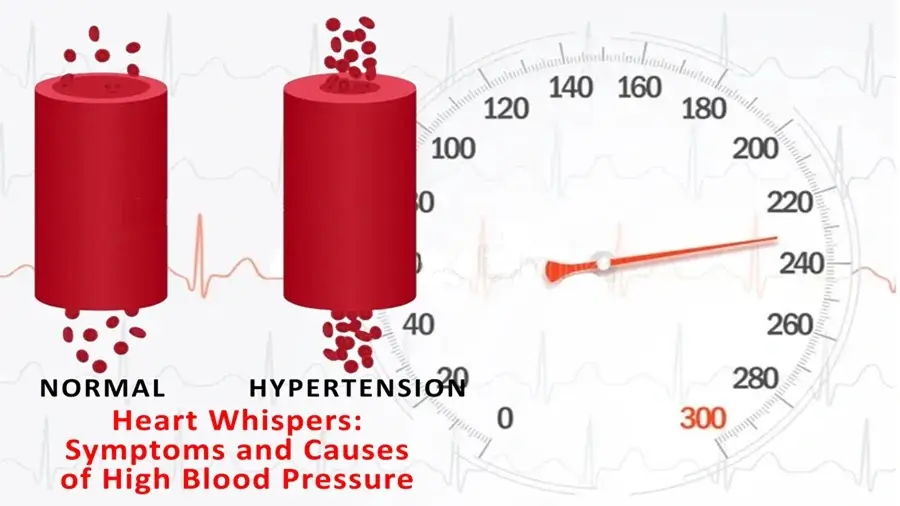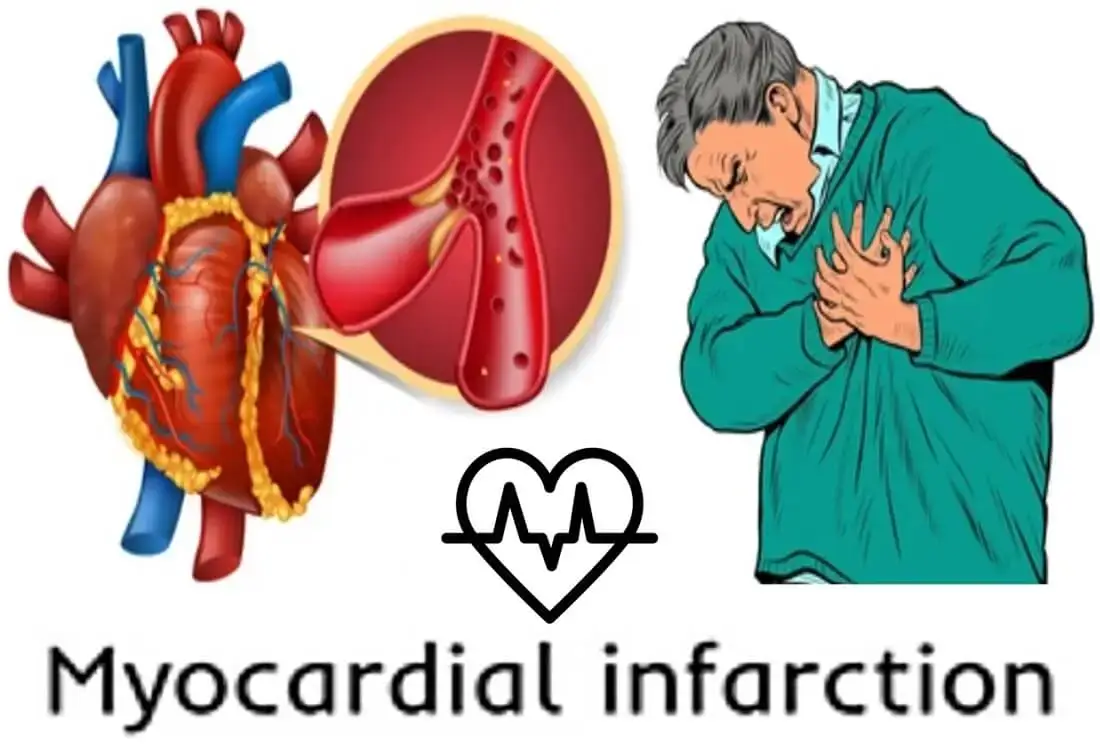
Introduction
Blood pressure readings show how well your heart is working and are like a health check for your body. It tells us about the pressure on the walls of arteries when your heart pumps blood. We measure it using a tool called a sphygmomanometer. It is expressed with two numbers, systolic (during heartbeats) and diastolic (between heartbeats) pressure. Knowing about blood pressure readings helps us understand if we might have heart problems.
In this article, we talk about what blood pressure is, and why systolic and diastolic readings are important. We also discuss why everyone, including doctors, should know and check blood pressure regularly.
What is Blood Pressure?
Blood pressure is how strongly the blood pushes against the walls of the arteries when the heart pumps it through the body. We measure it in millimeters of mercury (mmHg) and use two values: Systolic Pressure and Diastolic Pressure.
Systolic Pressure:
When your heart pumps blood, it creates pressure on the walls of your arteries known as systolic pressure. This occurs when your heart squeezes to push blood into your body. This pressure is measured as the first or top number in the blood pressure readings. Monitoring systolic pressure is crucial because elevated readings may indicate that your heart is working hard. Thus it is potentially leading to health problems such as heart disease and stroke. Therefore, taking care of your systolic pressure is essential for maintaining a healthy heart and preventing potential issues.
Diastolic Pressure:
When your heart is at rest between beats, the pressure in your arteries is referred to as diastolic pressure. This occurs when your heart takes a break before pumping again. Diastolic pressure is measured as the second or bottom number in the blood pressure readings. Monitoring diastolic pressure is crucial because elevated readings can indicate issues with the flexibility of your blood vessels, potentially causing problems. Checking both systolic and diastolic pressure helps comprehensively understand your blood pressure readings. It also identifies any issues early, contributing to the maintenance of a healthy heart.
Blood pressure is like a health check for your body, ensuring that blood moves properly and delivers oxygen and nutrients to different parts. We measure it with a tool called a sphygmomanometer, using units called mmHg. Normal blood pressure is typically around 120/80 mmHg. but it can vary based on age, gender, health, and lifestyle. We have different categories, or “Blood Pressure Ranges,” to understand the numbers better:
- Hypotension: Less than 90/60 mmHg
- Normal: Below 120/80 mmHg
- Elevated: 120-129/80 mmHg
- Hypertension Stage 1: 130-139/80-89 mmHg
- Hypertension Stage 2: 140 or higher/90 or higher mmHg
- Hypertensive Crisis: Higher than 180/120 mmHg
If your blood pressure is too high (hypertension), it can cause problems like heart disease and strokes. On the other hand, if it’s too low (hypotension), you might feel dizzy or faint. Checking your blood pressure readings regularly is important for a healthy heart. By eating healthy, exercising, managing stress, and taking medicine if needed, we can make sure it stays good. Always talk to your doctor for advice on keeping your blood pressure in check.
Why is it important to understand blood pressure readings?
To keep your heart healthy and avoid problems, it’s important to regularly check and understand your blood pressure. Knowing your blood pressure is crucial because it tells us a lot about how your heart is doing. When we understand these numbers, we can take steps to keep our hearts healthy, prevent issues, and make smart choices for our overall health. By listening to the advice of doctors and checking regularly, we can stay healthy.
Here are key reasons why it is important to comprehend blood pressure readings:
Cardiovascular Health Assessment:
Your blood pressure tells us a lot about your heart health. It’s like a signal showing how strong your heart is when it squeezes and rests. Doctors look at two numbers, systolic and diastolic, to understand how well your heart works and how your blood vessels resist. If the numbers are not normal, it might mean problems with your heart, blood vessels, or how blood moves in your body.
High blood pressure (hypertension) can be risky and cause heart issues, strokes, or problems with your kidneys. On the other hand, low blood pressure (hypotension) might make you feel dizzy or have trouble with your organs. Checking your blood pressure regularly helps find these problems early, and doctors can suggest things to keep your heart healthy.
Identification of Hypertension:
High blood pressure (hypertension) is a common risk for heart problems and strokes. It’s important to check regularly to catch and manage it early, preventing issues. Understanding blood pressure readings is crucial to finding hypertension, which means the numbers are consistently high. Doctors use numbers like 130/80 mmHg to know if it’s too high. Checking regularly helps find it early, so doctors can act quickly. Finding hypertension early is vital to stop heart disease, strokes, or kidney problems. With this knowledge, doctors can make plans with lifestyle changes and medicines to keep blood pressure under control and lower the risk of heart problems.
Risk Prediction and Prevention:
Knowing about blood pressure is important to check if someone might have heart problems. This knowledge helps us take actions like eating healthy, changing diet, and exercising. These actions help to stop high blood pressure or manage it if we already have it. For doctors, the squeezing and resting numbers from the blood pressure machine tell them if there might be a problem. If the numbers are always higher than 130/80 mmHg, it means there’s a higher chance of having heart problems.
Checking regularly helps find this early. With this info, people and doctors can work together to stay healthy by eating well and exercising. Sometimes it helps to decide to take medicine to keep blood pressure good and avoid heart issues and strokes.
Detection of Hypotension:
Low blood pressure (hypotension) can make someone feel dizzy, faint, or tired, showing why it’s important to check blood pressure regularly. To find out if blood is not flowing well, doctors look at two numbers, like 90/60 mmHg, to know if it’s too low. Checking regularly helps find it early so doctors can help in time. This knowledge helps doctors figure out why it’s low, suggest changes to how we live, and sometimes give medicine to raise it and avoid problems. Checking regularly and taking action based on blood pressure helps make sure people stay well and don’t have issues because of low blood pressure.
Treatment Guidance:
Checking blood pressure is very important for doctors to decide the right treatment for heart problems. Knowing both the squeezing and resting numbers helps make plans just for you, like changing what you eat, taking medicine, or doing both. For high blood pressure, doctors might suggest eating better, moving more, relaxing, and taking medicine. Checking regularly helps see if the plan is working and if changes are needed. If blood pressure is too low, doctors will find out why it’s low and suggest changes or medicine to raise it. Using blood pressure numbers helps doctors create special plans for each person to keep their heart healthy and avoid problems.
Monitoring Medication Efficacy:
People who take medicine to help with their blood pressure should check it regularly. This helps make sure the medicine is working well and allows changes if needed to keep blood pressure in a good range. Doctors need to know how the medicine is doing with both the squeezing and resting numbers. Checking often helps the healthcare team see if things are going well or if changes to the medicine are needed.
If someone has high blood pressure, regular checks help find out if the plan is working. If blood pressure is too low, checking makes sure the medicine is doing its job without causing problems. Understanding blood pressure numbers and checking regularly is important to make sure the medicine is helping and keeping the heart healthy.
Overall Health Maintenance:
Checking blood pressure regularly is important to stay healthy overall. Blood pressure helps understand how well the heart is working, and knowing both squeezing and resting numbers helps people and doctors figure out what to do. This information helps make changes to how we live, like eating good food, moving our bodies, and handling stress, to stop high blood pressure or manage it if we already have it. Making changes based on blood pressure helps keep the heart healthy and stops problems. Doing this regularly not only keeps the heart well but also helps prevent other issues, showing how important it is for our health for a long time.
Individualized Health Management:
Blood pressure numbers are different for everyone and can change based on things like how old we are, if we’re a boy or a girl, and how healthy we are. This knowledge helps make plans just for you, so doctors can decide what to do to keep you healthy. Knowing about blood pressure numbers is very important for doctors. They use this information to make special plans that might include changes to what you eat, taking medicine, or both. This special plan is made just for you based on your age, whether you’re a boy or a girl, and how healthy you are. Doctors use this special plan to help keep you well and make sure you stay healthy.
Prevention of Complications:
Checking and taking care of high blood pressure regularly is important to stop big problems like heart disease, stroke, and issues with the kidneys. Knowing about blood pressure numbers helps a lot in preventing these big problems. Doctors check both the squeezing and resting numbers to find out if something is not right with blood pressure.
For people with high blood pressure, doctors can make changes to how they live or what they do based on these numbers. This helps to lower the chance of having big problems. And for those with low blood pressure, checking helps make sure the medicine they take is working well without causing any issues. Doing this regularly, using blood pressure numbers, is a big help in keeping the heart healthy and stopping problems, making sure we stay well for a long time.
Informed Decision-Making:
Knowing about blood pressure helps people take care of their health actively. This information helps us make smart choices about how we live, take our medicine, and other things that affect our blood pressure. Both regular folks and doctors use this knowledge to look at the squeezing and resting numbers, figuring out how the heart and blood are doing.
People can make changes to how they live to stop high blood pressure, and doctors can use these numbers to make good choices about medicines and other treatments. Doing this regularly helps make sure everything stays okay and prevents problems. Making choices based on what we know about blood pressure readings helps us stay healthy and avoid issues with high or low blood pressure.
Conclusion:
So, understanding how blood pressure works and reading its numbers is important to keep your heart healthy. Checking it regularly helps find problems early, so you and your doctors can do something about it quickly. Whether you need to change how you live, take medicine, or both, knowing about blood pressure readings helps you make smart choices for your health. By focusing on the importance of blood pressure, we can prevent issues and take an active role in keeping our hearts strong, leading to a longer and healthier life. Going for check-ups, making good choices, and working together with doctors are the keys to having a heart that stays healthy.


Pingback: Heart Whispers: Symptoms and Causes of High Blood Pressure
Pingback: Unmasking Myocardial Infarction: Made Simple for You - Body Mysteries